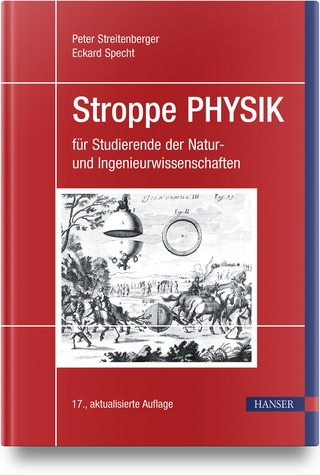
The Birth of Science
Springer International Publishing (Verlag)
978-3-030-51743-4 (ISBN)
Alex Ely Kossovsky is the author of the books "BENFORD'S LAW: Theory, the General Law of Relative Quantities, and Forensic Fraud Detection Applications," "STUDIES IN BENFORD'S LAW: Arithmetical Tugs of War, Quantitative Partition Models, Prime Numbers, Exponential Growth Series, and Data Forensics," and "SMALL IS BEAUTIFUL: Why the Small is Numerous but the Big is Rare in the World." Kossovsky is the inventor of a patented mathematical algorithm used in data fraud detection and analysis, and is considered by some to be the world's leading expert on the topic of Benford's law and its many applications. The author specialized in Applied Mathematics and Statistics at the City University of New York and in Physics and Pure Mathematics at the State University of New York at Stony Brook.
Chapter 1 - The Scholars Who Sequentially Ignited the Scientific Revolution.- Chapter 2 - Was it an Apple, Moon, or Planets for Newton?.- Chapter 3 - Galileo's Other Revolution.- Chapter 4 - Nicolaus Copernicus and the Heliocentric Model.- Chapter 5 - Tycho Brahe - The Meticulous Celestial Recorder.- Chapter 6 - Johannes Kepler - The First Data Analyst.- Chapter 7 - Kepler's Attempts to Fit Orbits Geometrically.- Chapter 8 - Kepler's 1st Law - Discovery of Elliptical Orbits.- Chapter 9 - Kepler's 2nd Law - Differentiated Orbital Speeds.- Chapter 10 - Kepler's 3nd Law - Harmony of the Planets.- Chapter 11 - Implication of the Third Law to Orbital Speed.- Chapter 12 - The Third Law is Independent of Planets' Mass.- Chapter 13 - Galileo Galilei - The Father of Science.- Chapter 14 - Galileo's Discoveries about Falling Bodies.- Chapter 15 - Rate of Fall is Independent of Body's Mass.- Chapter 16 - Galileo's Analysis of Projectile Motion.-Chapter 17 - Galileo's Hint at the Concept of the Vector.- Chapter 18 - Galileo's Puzzling Hint at Celestial Application.- Chapter 19 - Galileo's Discoveries about Pendulum Motion.- Chapter 20 - Galileo's Astronomical Discoveries.- Chapter 21 - Galileo's Trial and Imprisonment.- Chapter 22 - Galileo's Writings on Relativity and Infinities.- Chapter 23 - Galileo's Work on Sound and Speed of Light.- Chapter 24 - Rene Descartes - The Rationalist Mathematician.- Chapter 25 - Isaac Newton and the Birth of Modern Physics.- Chapter 26 - The Publication of Principia.- Chapter 27 - The Bitter Dispute with Leibniz over Calculus Priority.- Chapter 28 - The Scientific Split Between England and Continental Europe.- Chapter 29 - Newton's Later Years and Royal Mint Work.-Chapter 30 - Newton's Semi-Heretical Christian Beliefs.- Chapter 31 - Newton's Three Laws of Motion.- Chapter 32 - Newton's Law ofUniversal Gravitation.- Chapter 33 - Deriving Kepler's 3rd Law from Newton's Laws.- Chapter 34 - The Rationale behind the Gravitational Formula.- Chapter 35 - The Observer, the Organizer, and the Theorist.- Chapter 36 - The European Nationalities of the Six Scholars.- Chapter 37 - The Supposed Vocations of the Six Scholars.-Chapter 38 - A Tale of Two Laws - Bode's Law & Kepler Law.
| Erscheinungsdatum | 17.08.2020 |
|---|---|
| Reihe/Serie | Popular Science | Springer Praxis Books |
| Zusatzinfo | XV, 220 p. 95 illus., 47 illus. in color. |
| Verlagsort | Cham |
| Sprache | englisch |
| Maße | 155 x 235 mm |
| Gewicht | 365 g |
| Themenwelt | Mathematik / Informatik ► Mathematik |
| Naturwissenschaften ► Physik / Astronomie ► Allgemeines / Lexika | |
| Naturwissenschaften ► Physik / Astronomie ► Astronomie / Astrophysik | |
| Schlagworte | Birth of scientific method • Copernican Revolution • Emergence of science as a path to knowledge • history of astronomy • History of scientific method • Intellectual giants of early astronomy • Rise of mathematics as descriptive tool • The Heliocentric model of the Solar System • The Scientific Revolution • universal gravitation |
| ISBN-10 | 3-030-51743-8 / 3030517438 |
| ISBN-13 | 978-3-030-51743-4 / 9783030517434 |
| Zustand | Neuware |
| Informationen gemäß Produktsicherheitsverordnung (GPSR) | |
| Haben Sie eine Frage zum Produkt? |
aus dem Bereich


